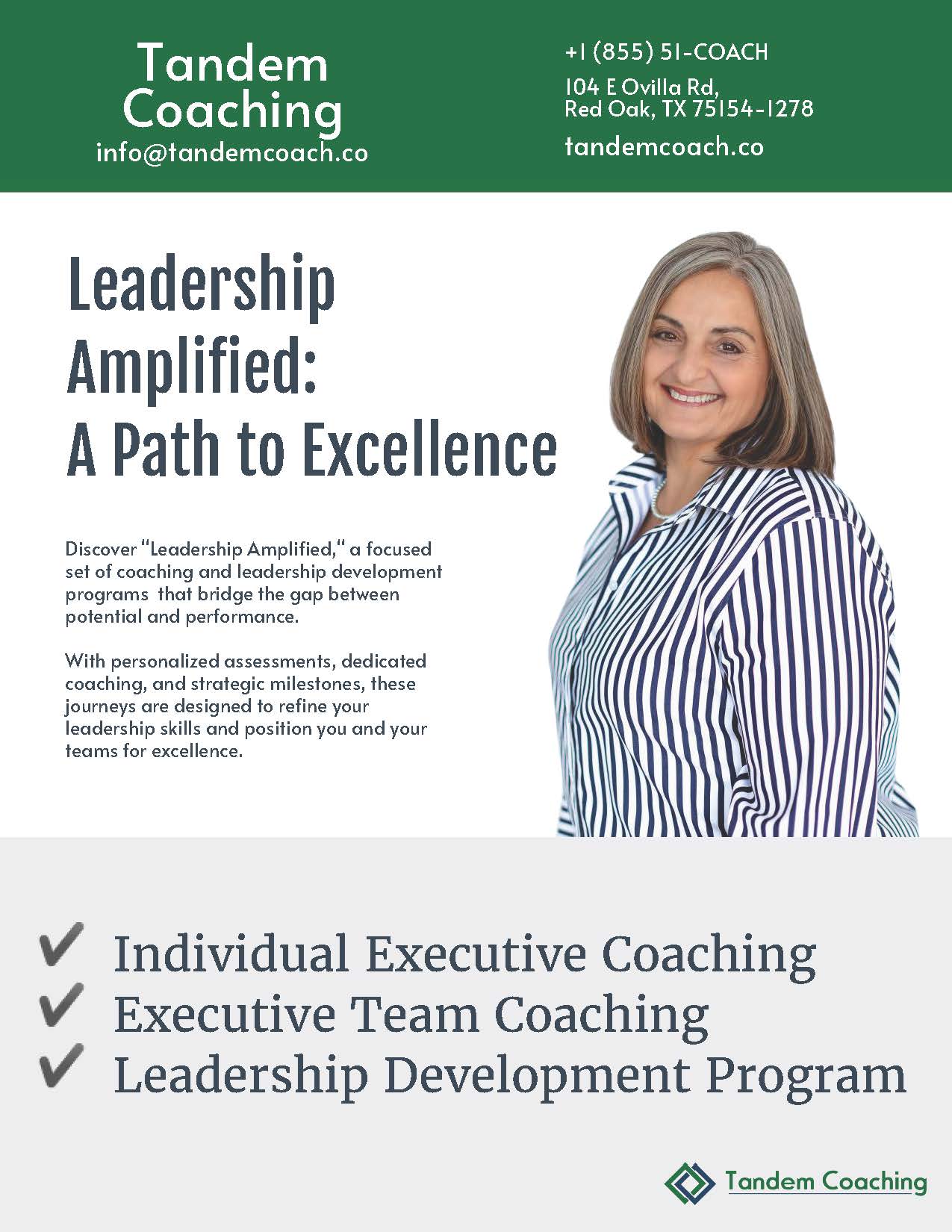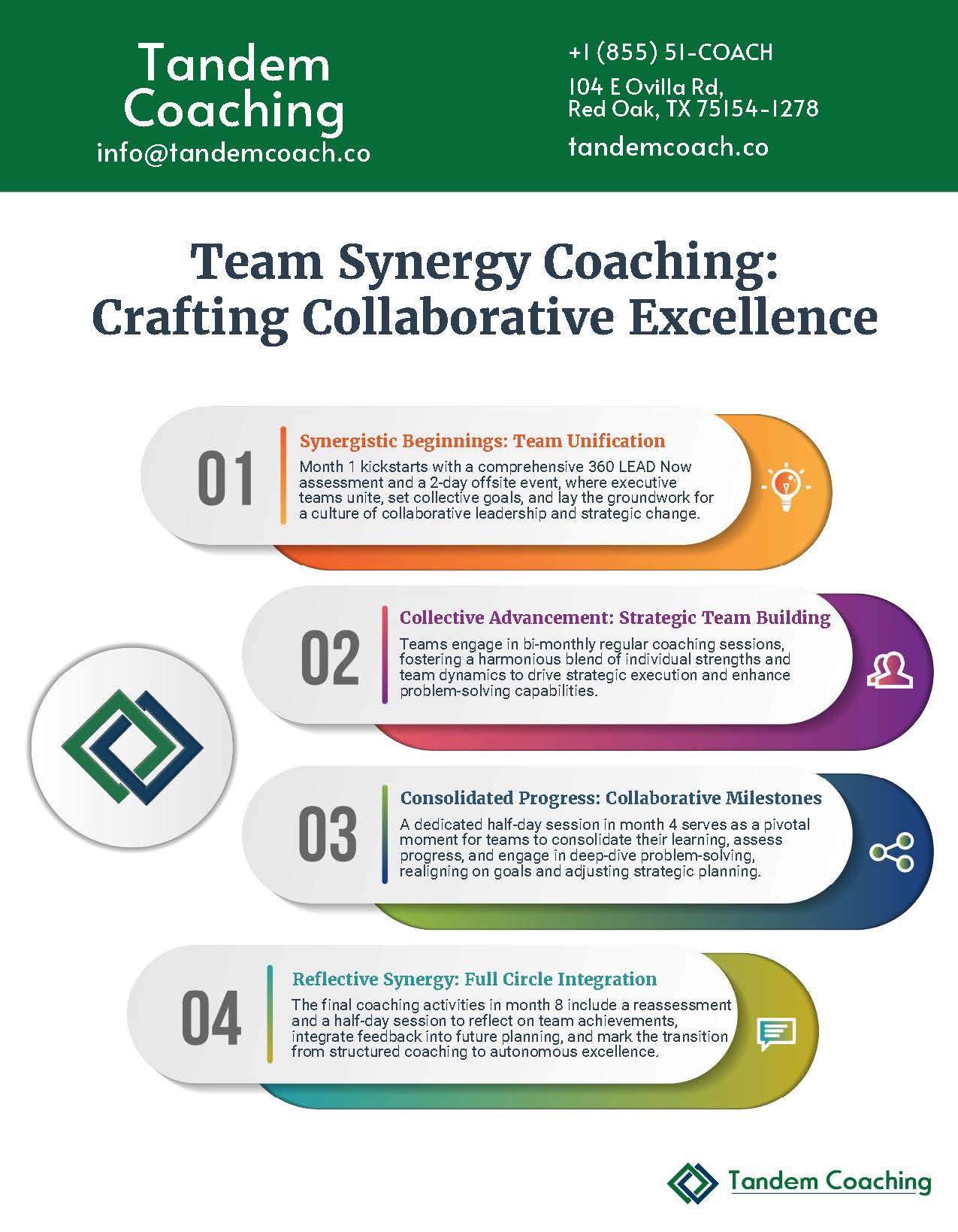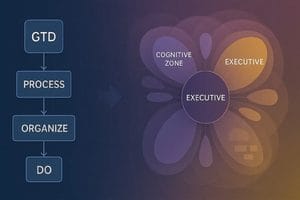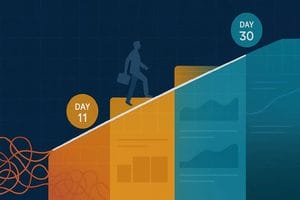Look around you; executive coaching is in high demand. Statistics show that about one-third of Fortune 500 companies use executive coaches as a part of their growth strategy. The growing popularity of executive coaching in organizations today has led to an influx of coaching frameworks, making it harder for executives to choose the right model.
Read on to discover some popular coaching frameworks, their technique, and the proven model Tandem Coaching utilizes for effective results.
TL;DR – Executive Coaching Models
Here is a list of the most popular executive coaching models in use today:
- The GROW Model
- The STEPPA Model
- The OSKAR Model
- The CLEAR Model
- The ACL Model (Action-Centered Leadership)
Each model has a different strategy, and in this article, we will discuss each coaching framework in detail. You will also discover how Tandem Coaching can help you with our customized executive coaching solutions.

Is There a One Size Fits All for Executive Coaching?
No, there is no one-size-fits-all approach. Each organization has unique needs, so the executive coaching method must be customized to suit specific situations and goals.
In addition to an organization’s unique needs, other important factors, such as organizational culture, individual needs and goals, and coach-client compatibility, should also be carefully considered while choosing the specific approach for executive training.

Types of Executive Coaching in the Workplace
Executive coaching exists in different forms, each tailored to meet the specific needs of the individual and organization. Here are some common forms of executive coaching in the workplace:
Executive Leadership Coaching
This is the most common type of coaching used in the workplace. The focus here is on senior leaders in the organization, enhancing their leadership skills and maximizing their potential to enable them to make better decisions that drive results for the organization.
Performance Coaching
Performance coaching improves the overall productivity and effectiveness of executives in an organization. This form of coaching is usually suggested for leaders who seem stuck in a particular position. Coaches work with them to identify strengths, set goals, and find areas of improvement.
Change Management Coaching
Executives often need to transition from one phase in their career to another. If mismanaged, this phase change can be disastrous, which is where a change management coach comes in. In these sessions, executives are equipped with the skills and mindset to navigate transitions smoothly and successfully lead their teams through a change.
Executive Team Coaching
If the goal is to foster a culture of healthy collaboration and teamwork in an organization, then executive team coaching is recommended. Some executives still struggle to work together effectively as a team. The coach has to help clients in this situation become better collaborators, ultimately leading to an enhanced living.
Executive Career Coaching
This type of coaching helps executives to navigate their career paths effectively. Executives looking to make either a transactional or a transformational transition in their careers are likely to benefit most from this form of coaching.

Necessary Executive Coaching Skills
Every executive coach should possess some of these necessary skills:
- Emotional intelligence
- Clear communication
- Critical thinking
- Active listening
- Interpersonal skills
- Problem-solving skills
- Relationship management
- Conflict resolution
- Stress management
- Adaptability to change

5 Executive Coaching Models Explained
Let’s explain the different executive coaching models in detail;
1. GROW Model
The GROW model is a well-known coaching framework for executive coaching. It was developed in 1980 by Sir John Whitmore. GROW stands for Goal, Reality, Options, and Will (Way Forward), a systematic approach that helps individuals achieve set goals.
- Goal: The GROW model begins with establishing a clear goal. The coach and client devise a measurable goal that can be tracked by the end of the session.
- Reality: The next step of this GROW model is a reality check. Both parties become aware of their current reality, identifying both strengths and weaknesses. This knowledge will help you plan the next steps toward achieving your set goals.
- Options/Obstacles: Now that you know your aim and current level, this is the stage where you discover the options available to you to help you achieve your goals. If there are obstacles in your way, you can identify them here and find creative ways to surmount them.
- Way Forward: In this stage, the coach and client establish a clear plan for the future. The coach supports the client and ensures the client follows through with the specific plan.
2. STEPPA Model
Angus Mcleod developed the STEPPA coaching model in 2003,. Emotions and their role in every planning process are at the heart of this coaching model.
- Subject: The first step in this coaching model is understanding the subject matter of discussion. Defining the subject at the start will help the coach tailor the approach to use accordingly.
- Target: This is where both parties set a clear goal and a desired outcome, providing a clear path for the coaching session.
- Emotions: McLeod talks about emotions as either motivators or demotivators. Emotions can influence decision-making, so coaches show clients how to manage their emotions properly and trigger the right emotions to make the right decisions.
- Perception: In this step of the coaching model, the coach works with the client to discover the client’s current viewpoint about the subject matter and expand it. This expansion is done by asking open-ended questions and exploring alternative options to provide solutions.
- Plan and Pace: This is the step in which the coach draws up an actionable plan to achieve the set goal. When the plan is drawn, the coach ensures that the client stays motivated through all phases of the plan as they grow closer to the goal.
- Adapt/Action: The last phase is the action phase, where the client begins implementing the set plans. The coach supports the client throughout, ensuring that all obstacles are overcome and that the client can adapt to changing situations and circumstances until the goal is actualized.

3. OSKAR Model
Mark and Paul developed the OSKAR model in 2002 to help people actualize their goals by emphasizing positive outcomes. It is a solution-based approach to tackling problems.
- Outcome: Here, the coach and client set the desired outcome of the coaching session.
- Scale: The next step is developing a scale based on your current reality. So, on a scale of one to ten, where are you on getting your outcome? To get an honest assessment, the coach and the client must conduct the rating.
- Know-how: In this phase, the coach and client collaborate to identify the skills and resources required to achieve their goals.
- Action: Here, the client starts to take practical steps toward the set goal. This step also involves a lot of affirmation; the coach must recognize the situation’s positive aspects and encourage the client to do more.
- Review: In this final phase of the Oskar model, the success of the session is reviewed. The scale in the second step can now be rechecked to see the progress level.
4. CLEAR Model
Peter Hawkins developed the CLEAR model in the 1980s. Its primary goal is to get employees invested in achieving goals. This type of team is excited about getting results and not just following set rules.
- Contract: This is where the desired outcome of the session is clearly stated.
- Listen: This is the phase where the coach carefully listens to the client’s thoughts and feelings. The coach encourages the client to honestly share his thoughts about the situation to enable a clear understanding.
- Explore: At this point, the coach needs to probe deeper into the situation by asking smart questions that can uncover underlying problems. These questions encourage clients to reflect on their past actions and experiences and discover new and more effective perspectives.
- Action: Both parties come together to develop an actionable plan based on the information gathered while exploring. The plan has practical steps for the client to achieve a goal.
- Review: Finally, it is time to review the progress made.
5. The ACL Model
The ACL model was developed by John Adair in 1960. It is a practical framework that focuses on three main areas that leaders should spend time developing. This model is generally known for its three core pillars:
- Task Achievement: This is the sector that talks about setting a goal and achieving it.
- Team Formation and Management: This sector helps leaders to develop unity among team members and properly manage them to ease collaboration.
- Individual Development: A team’s success depends on the success of each individual. This sector teaches the leader to address each individual’s personal needs and ensure that they are aligned with the general goal.

Executive Coaching Tools and Techniques
Certain tools and techniques are required to function effectively as an executive coach. These tools help coaches support their clients in achieving set goals. Here is a list of such tools and techniques:
1. Goal-Setting Tools: These tools will assist you in setting measurable goals.
- SMART Goals
- Action Priority Matrix
- GoalScape
2. Productivity Tools: If you manage multiple clients, you need a tool that always keeps productivity in check.
- Pomodoro Timer
- Google Calendar
3. Assessment Tools: You need tools to identify your client’s strengths and weaknesses, personality type, and emotional intelligence level.
- Myers-Briggs Type Indicator (MBTI)
- CliftonStrengths
4. Self-awareness Tools: These tools can help clients better understand their priorities.
- Wheel of Life
5. Communication and Feedback Tools: You need tools to streamline communication and schedule meetings effortlessly.
- Slack
- Google Hangout
- 360-degree feedback

Why Should I Hire an Executive Coach?
Is hiring an executive coach really worth it? Yes, it is. According to World Metrics, companies that utilize executive coaching report a 138% increase in performance. Hiring an executive coach is beneficial to both the individual and the organization.
If you are considering hiring an executive coach, look no further than Tandem Coaching. Our coaches are globally known for delivering exceptional results.
No matter your career stage or your organization’s unique situation, you can rest assured that we have just the right executive coach for you. Let’s propel your career today; connect with us.

Frequently Asked Questions (FAQs)
Here are some frequently asked questions about executive coaching models and the answers:
What is the Best Coaching Methodology?
The Tandem coaching approach is called ASPIRE, and we believe it is the best coaching method. ASPIRE stands for Assess, Strategize, Plan, Inspire, Reflect, and Evolve.
What is a Team Coaching Model?
Team coaching is a structured framework that helps executive coaches facilitate effective team development. Coaches who undergo this coaching model are excellent at handling collaborations and getting their teams to work together efficiently to produce results.
Tandem Coaching offers a personalized executive coaching program for top executives like you. Depending on your specific needs, we utilize different types of executive coaching. Partner with us today to step up your career.
Conclusion
Knowing the suitable coaching model to utilize helps you optimize your coaching session. At Tandem Coaching, we are passionate about your organization’s growth and development. We have a customized coaching program designed to suit your unique needs.
Let’s get started on your coaching journey today. Give us a call.



Boost Your Leadership Team Success!
Take your leadership team to the next level and achieve great results with our executive coaching.
Learn how our coaching and ASPIRE method can change things for you—get a free brochure to begin your journey.
About the Author
Cherie Silas, MCC
She has over 20 years of experience as a corporate leader and uses that background to partner with business executives and their leadership teams to identify and solve their most challenging people, process, and business problems in measurable ways.















